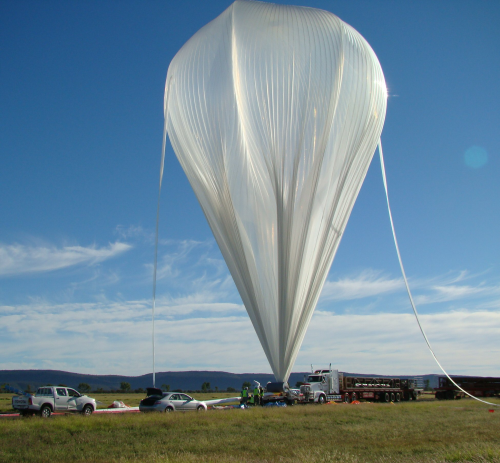
Future space exploration will require large, lightweight structures for facilities such as greenhouses and space bases. These projects are likely to require the use of a prepreg which can be shipped uncured into orbit for curing on-site.
| The second major layer of the earth's atmosphere, the stratosphere extends from the top of the troposphere at about 11 miles (17 km) altitude to about 30 miles (50 km) above the surface. Within this layer, temperature increases with altitude to reach about 32°F (0°C). |
Dr Alexey Kondyurin, a Senior Research Fellow at the University of Sydney, Australia, led a team to investigate the effect of stratospheric conditions on the polymerisation process in the polymer matrix of a composite material.
Gurit provided its SE 70 carbon fibre epoxy prepreg to the project. This is a low temperature cure prepreg developed for use in the construction of large components using low energy cure cycles.
Space tests
Uncured samples of the SE 70 prepreg, along with one cured control sample, were stapled to a sleeve attached to an aluminium base, together making up the flight cassette. Once weather conditions were suitable, the cassette, weighing just 1kg, was fixed to the outside of a balloon’s cabin, a telemetry unit.
The balloon was launched from Alice Springs Seven Mile Airport in Australia on 16 April 2010. Over the next three days the balloon and its payload, including the uncured Gurit SE 70 prepreg, were exposed in the stratosphere, and reached a maximum altitude of 4 km. Temperature variations of -76 to 32.5 °C and pressure up to 2.1 torr were recorded during the flight.
| You can read Dr Alexey Kondyurin's blog about large space construction using composite materials here. |
After three days, the payload was separated from the balloon, and over 3 hours it descended by parachute to land nearly 1000 km from the launch site.
The samples of SE 70 prepreg from the flight cassette, as well as those from the ground control cassette and the refrigerator control cassette, were analysed, with particular attention paid to the curing reaction and the degree of cross-linking. The final test of the curing ability of the materials after exposure in the stratosphere was carried out using dynamical mechanical analysis of the samples, which had been cured over 3 days at 80°C.
The results show no significant difference between the glass transition temperatures (Tg) of the flight, ground control and refrigerated samples. This demonstrates that uncured samples of SE 70 prepreg can be delivered and stored in the stratosphere with no negative impact on its curing capability.
Prepreg cured in the stratosphere
A subsequent project, which took place in November 2012, saw these same samples of Gurit’s SE 70 prepreg cured at an altitude of 26 km during a stratospheric flight, resulting in it being the first prepreg in the world to be fully cured in the stratosphere.
Analysis of the samples is ongoing.






